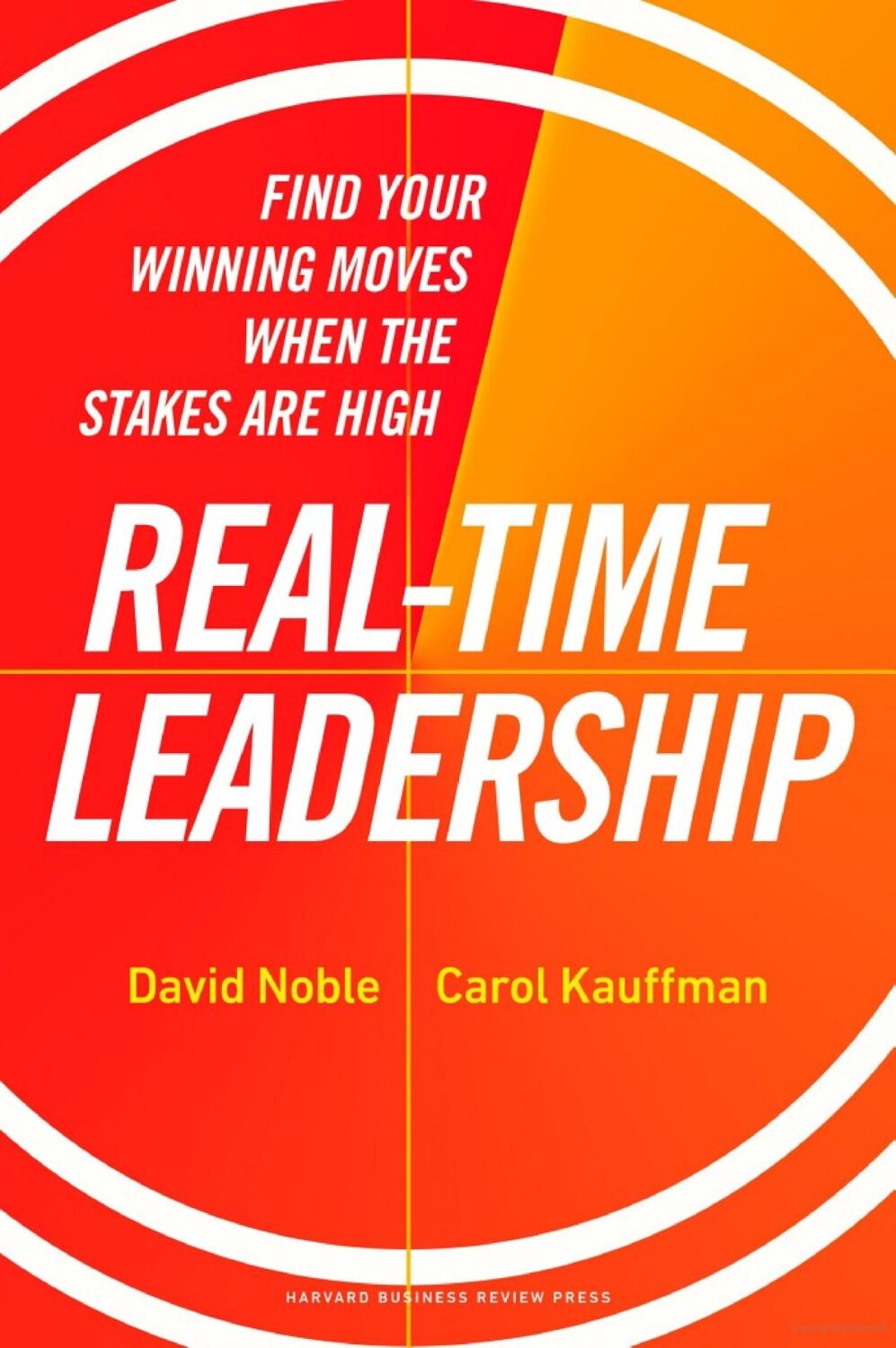Psychiatrist Viktor Frankl, who survived three years in Nazi concentration camps, said “between stimulus and response there is a space. In that space is our power to choose our response.”
Executive coaches David Noble and Carol Kauffman believe in today’s tumultuous world, leaders must create space between the challenges that are thrown at them and how they react. “Making optimal choices in real time is possible,” they advise in their book Real-Time Leadership.
That involves unlearning the reactive postures that you have honed over the years, allowing you to often operate on autopilot: When X happens, you do Y. Using your reflexes can work when navigating known challenges or familiar circumstances. But in high-risk, high-stakes situations where much is unknown or changing, your instincts can lead you to disaster. The two coaches have a series of techniques to avoid such a setback.
You need to use the space between stimulus and response to investigate the three dimensions that always accompany a leadership challenge: External, internal and interpersonal. What are the external challenges, goals and priorities of your role, such as colleagues and competitive pressures? What are the internal strengths, emotions, values and goals you bring to the table? Finally, how can you help others be their best? Every challenge involves some or all of those dimensions.
You must be mindfully alert in high-stakes situations – aware of what is needed from you. “Mindfulness is about possessing calm awareness of what is around you, within you and what you are feeling, as well as the capacity to accept that without judgment or bias,” Mr. Noble and Ms. Kauffman write. You must be both precise and flexible about where to put your attention.
Three questions help: What does a win look like for the goal I want to achieve? Am I being the person I want and need to be right now? Am I leading in the way others need me? From there, you must move on to generating options – how you will achieve your goals. They argue for anything important you must envision and act on at least four pathways to achieve your goals – four ways to navigate any external priority, four ways to achieve your internal priorities and four ways to act on your interpersonal priorities.
Here are some either-or questions they share to help generate options: Should you be strategic or tactical, risky or conservative, move fast or slow, make big moves or small, be data or feelings driven, innovative or go for what’s proven, be conceptual or pragmatic, seek perfection or accept 80 per cent?
Mr. Noble and Ms. Kauffman also coach clients to consider four stances that could be appropriate. You could “lean in,” taking an activist approach in resolving the issue. You could lean back, taking an analytical stance to observe, collect and understand the data. You could “lean with,” taking a collaborative stance with others, focusing on caring and connecting to develop an optimal culture. Finally, don’t lean: Be still, receptive, taking in what is around and within you so creative wisdom can emerge.
After generating options, take time to check that you are viewing things properly. They tell the story of a CEO candidate, the favourite for the position, who bombed in the first interview because he drowned the committee in information, determined to show how much he knew. But when the coaches encouraged him to view the situation from the board’s vantage point before the final selection, he realized they didn’t care about the details. He had to consider how much they could absorb rather than being obsessed with how much he wanted to say.
“Vantage point excellence is when you can see the world from others’ point of view as well as your own.” the coaches stress. More broadly, strip away distortions and see reality as it is. To manage the space between stimulus and response you must be centred. They sum that up in five Cs: Calm, clear, curious, compassionate and courageous.
“Mastering the Five Cs takes time, but practising them can be key to your capacity to be successful,” they write. When faced with a tough challenge, check in on those five Cs. Are you calm? Are you seeing clearly? Is your curiosity still active, or are you narrowing your thinking under pressure? Is your compassion strong? Can you find the courage that might be required? Which of the five Cs do you most need right now?
Mr. Noble and Ms. Kauffman suggests rating yourself on a one-to-10 scale on each of the five Cs. Anything under a five needs addressing. “Being aware enough to pause and name your feelings can be a powerful intervention. It can create enough space for you to consider alternative approaches to your challenge,” they write.
It can seem like a blizzard of numbers, rather than a leadership map. Three dimensions. Four stances. Five Cs. But in anxious moments, anchors like that can help. Think how to apply them between stimulus and response. Which can help
you most?
